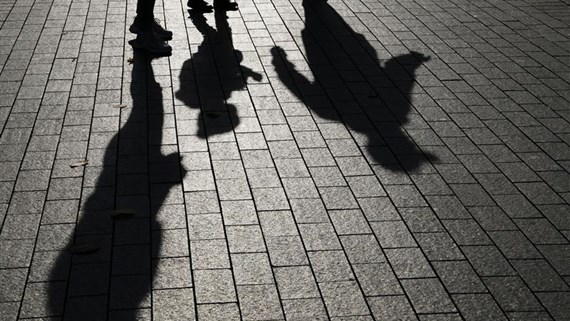Navigating an inquest following a student suicide
Insight

This article discusses suicide. If you are affected by its content, you can contact the Samaritans free on 116 123 or visit samaritans.org for confidential support.
Student mental health and suicide remain significant concerns for universities and colleges, which are deeply committed to promoting the wellbeing of all students, particularly those who are most vulnerable, and to reducing the risk of suicide and its devastating impact. In this article, we seek to support universities and colleges who are navigating an inquest following a student suicide.
Introductory points
The inquest process is a critical legal procedure aimed at determining the circumstances surrounding a sudden or unexplained death. The inquest process is there to unpick what actually happened which may result in a finding, which sometimes is not suicide. The role of the coroner is not to apportion blame, but to establish the facts and, where appropriate, make recommendations to prevent future deaths.
Procedural guide to inquests
About half of all deaths in England and Wales go to a coroner. These deaths are where the medical cause of death is unclear, or where there are thought to be suspicious circumstances, or an unnatural death. Many of these cases can be resolved without a coroner, following, for example, a more in-depth medical report. A small number of these deaths proceed to the formal inquest process in the coronial courts.
The purpose of an inquest
Every inquest has a twofold purpose: (1) investigatory purpose; and (2) an ancillary preventative purpose. To fulfil the investigatory purpose of the inquest, the coroner must answer four statutory questions about the particular death:
- who died;
- where did they die;
- when did they die; and
- how did they die.
The ancillary preventative duty is the obligation the coroner has to consider whether the material gathered in the course of their investigation has identified an extant risk of future death. If the coroner answers in the affirmative, they have both the power and duty to produce a Prevention of Future Deaths report (PFD) to someone (person, institution, organisation, etc) who has something to do to prevent future deaths, as well as the chief coroner. Recipients of a PFD must respond within 56 days. The response can express disagreement with the coroner’s findings, or can explain that the entity is unable to fulfil the requests made in the PFD. Sometimes the response to a PFD can be a way for institutions to pivot away from the past incident and instead reinforce their actions and procedures which have made the institution safer for its community.
Nuances of the coroner’s court
Unlike in a traditional court or tribunal setting, the witnesses in an inquest are all considered to be the coroner’s witnesses. The inquest itself is an inquisitorial process where there is no case to advance, but instead there is a case to investigate through a fact-finding process.
The ambit of the questioning by the coroner is limited by the scope of the inquest – which is ultimately at the discretion of the coroner and can evolve during the course of the inquest itself.
Witnesses in an inquest can also be questioned by any ‘Interested Person’ or their legal representative. There can be occasions when Interested Persons are not legally represented, which could lead to a bereaved family member questioning a member of an institution directly, which can be a very stressful and emotional experience for all who are involved.
Disclosure during an inquest is controlled through a two-stage process: (1) disclosure to the Coroner – in a clean, unredacted form; and (2) disclosure to the Interested Persons. An organisation is rarely viewed positively if seen to be reluctant to provide disclosure. The coroner has control over how the information is provided to Interested Persons, which can be in a form suitable to the needs and concerns of the Interested Persons.
Giving evidence at an inquest
Legal representation
It is not a requirement in the coroner’s court for Interested Persons to be legally represented. However, in our experience, families often do arrange some type of legal representation. In these scenarios in particular, though perhaps in any event, it is generally advisable that the university or college also be represented and for any individuals who need to give evidence on behalf of the institution to be able to benefit from that advice.
Role of a witness
In the Coroner’s Court, witnesses are expected to help guide the coroner through the information available to them. They are meant to aid and assist the coroner, rather than a specific Interested Person. As in any court setting, witnesses have a duty to give a full and honest account.
Preparing a witness statement
It is not unusual for the coroner to call someone as a witness without first directing them to prepare a written statement. However, a written statement can prove to be incredibly useful as a foundation for a witness’s narrative and the answers to the questions that will be posed, so we would generally suggest that a witness statement is prepared regardless of whether it has been specifically directed. Conversely, anything in a statement can be read out and therefore subject to challenge by the other Interested Persons and/or coroner.
Referring to documents
Witness statements do not need to constantly refer to documentation or an agreed bundle. While there will be an agreed bundle of relevant documents, the statements are often fairly prose-like with little to no reference to underlying documentation.
Witness familiarisation
In any legal setting, giving witness evidence can be intimidating. Witness familiarisation can be a useful tool to get witnesses familiar with the inquisitorial questioning style in the coroner’s court. The tone of a witness through their oral and written evidence needs to exemplify a balance of empathy, careful consideration of the events that have led to the Inquest, and compassion – as at the heart of an inquest is a death and a grieving family.
Media reporting and reputational concerns
Due to the nature of inquests, specifically inquests into the deaths of young people, press interest is not only natural, but expected. The principle of open justice means that the media can report on anything said in open court, which can lead to significant press coverage. Ultimately, the coroner has very limited power to exclude the media and public due to the press’s absolute privilege for fair and accurate contemporaneous reporting. The press is entitled to report anything heard at the inquest.
However, inquests can deal with distressing topics of suicide and mental health. Therefore, IPSO Editor’s Code of Practice and the Samaritans Media Guidelines include important guidelines for members of the press to ensure that the nature of their reporting does not sensationalise what has occurred and does not discuss any method to avoid any imitational suicide behaviour. The press must balance their absolute privilege to report on the inquest with their obligation not to intrude in or exacerbate the grief or shock of a grieving family.
The coroner’s court is a unique jurisdiction, as it invites Interested Persons to proactively make representations – without needing to include other Interested Persons in the correspondence – directly to the coroner. This serves as a mechanism for Interested Persons to communicate specific concerns they may have regarding individuals (who are not Interested Persons) but likewise have heightened sensitivities around their own privacy and reputation – for example, peers of the deceased, romantic partners, staff, etc.
Learning lessons
The nature of higher education institutions tends to mean that learning is at the heart of their actions during the inquest process. More often than not, higher education institutions seek to conduct their own review of the events which led to the death before the inquest – which sometimes is even expected by the coroner. It shows the seriousness of the incident and the importance to the institution of learning from what has happened.
This article reflects the key takeaways from a webinar on 4 February 2025 by Katie Fudakowski, Athalie Matthews, and Sarah Le Fevre (Barrister, 3 Raymond Buildings) discussing how to navigate inquests into student deaths. The webinar was part of a two-part series, with the second part discussing student wellbeing and suicide prevention in the higher education sector.
This publication is a general summary of the law. It should not replace legal advice tailored to your specific circumstances.
© Farrer & Co LLP, April 2025







